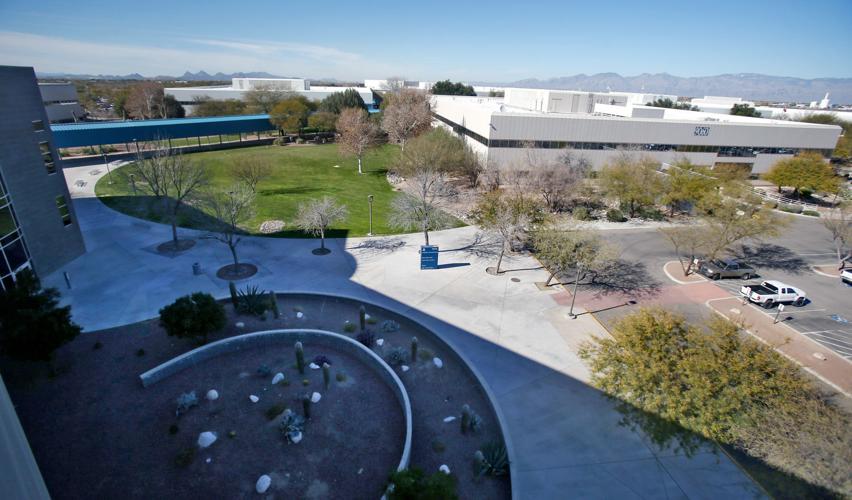Pima County voters appear to have rejected all seven of the proposals on a massive county bond plan.
“This is a victory that Chuck (Huckelberry) is not gonna be happy about,” Pima County Supervisor Ally Miller, a vocal critic of the bonds, said about the county’s administrator Tuesday night. “I’m so happy, you know that.”
Voters were asked to decide the fate of a seven-question package worth $815 million. It covered projects in road repairs, tourism promotion, parks, public health, flood-control and open-space purchases.
Opponents of the bond proposal focused their criticism on the county’s debt and tax rate in their push to get the bonds defeated.
While the ballot count was far from complete before deadline, each of the bond proposals was losing by a significant margin.
“I think the public was knowledgeable,” said Joe Boogaart, with the Taxpayers Against Pima Bonds campaign. “Our message got across.”
Boogaart also noted the amount of money bond supporters raised, more than $300,000, might have been a turnoff to voters.
“Maybe the pro campaign had a little too much money, and people say that,” he said.
While bond opponents were ebullient with the prospect of an overwhelming victory, Miller was seen waving the American flag and dancing at an election party in Oro Valley.
The mood at the pro-bonds event Tuesday night was grim.
“I was stunned, stunned,” said Larry Hecker, with the Yes on Pima County Bonds Campaign. “I don’t understand it.”
Hecker said the message from bond opponents about taxes and spending seems to have resonated with voters.
Tucson City Councilman Steve Kozachik said he was discouraged that the roads portion of the bond package appeared to have failed.
“The single most important item got buried in the Christmas ornaments — trying to put on something for everybody ended up giving people something to vote against,” he said.
Tucson Mayor Jonathan Rothschild said if the bonds do go down to defeat, the city may have to ask city voters to step up on their own.
“It says to us as a city government that we’re going to have to take it on ourselves to get the improvements we need for our roads and our parks, and we’re going to have to make very focused efforts to ask voters for the least amount of money necessary to get improved results,” Rothschild said Tuesday night.
In November 2012, city voters agreed to a $100 million road-bond plan.
Bond opponents have been successful in casting the county as a tax-and-spend government.
Pima County has the highest tax rate of all Arizona counties at more than $5.96 per $100 of assessed property value, they noted. That rate includes primary, secondary, library district, flood-control and fire-district assistance taxes.
The county’s debt also was the focus of bond opponents.
The county has more than $1.3 billion in outstanding bond debt. Opponents pointed out that that’s more than any county in the state.
Other cities in the state, however, carry heavier debt loads when compared to Pima County. That’s because other counties, unlike Pima, haven’t borrowed money, leaving debt- financing projects to the cities.
Supporters of the bonds attempted to cast the $815 million borrowing plan as an investment in the community.
“We obviously need an infusion into our economy,” said Carolyn Campbell, with the Coalition for Sonoran Desert Protection. “All of these propositions are good and worthwhile.”
All together, the bond package would have added 39 cents to the secondary tax rate.
The increase would have been staggered over the life of the bonds, with the total secondary rate never exceeding 81.5 cents. The current secondary rate is 70 cents per $100 of assessed value.
Some of the projects that went down in the bond election included a road and highway improvement question to conduct $200 million worth of projects.
That included $160 million in road repairs to be disbursed throughout the region.
A $30 million plan to fund the first leg of the Sonoran Corridor project to connect Interstates 10 and 19 south of Tucson International Airport was also proposed.
The money would have been used to fund an initial east-west portion of the roadway, running from about I-10 and Rita Road to the recently completed realignment of Hughes Access Road, now called Aerospace Parkway.
Funding for the remaining corridor project would come from the federal government, pending an OK from Congress.
Banner University Medical Center-South Campus also was slated for $18 million for expansions to the intensive care unit, operating room and behavioralhealth facilities.
There also were plans for $191 million to fund additional parks facilities.
That proposition included $25 million for the Kino Sports Complex. The plan was to fund additional land purchases south of the existing facilities to develop new sports fields and a tournament complex.
Bonds also would have funded a $3.5 million plan to build a velodrome, an oval bicycle track with steep banked turns.
“It’s unfortunate. The roads are not going to fix themselves and the parks are not going to fix themselves,” Hecker said.










